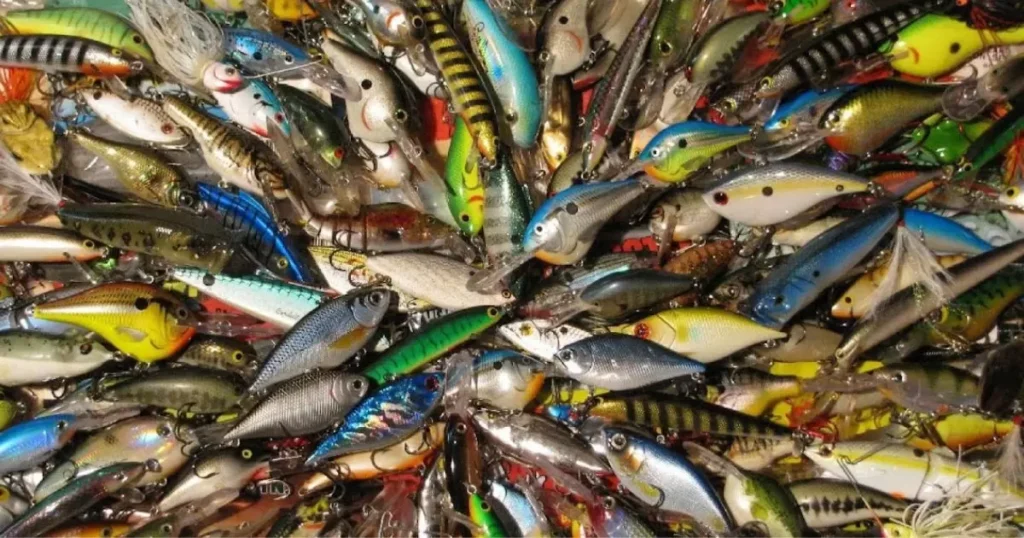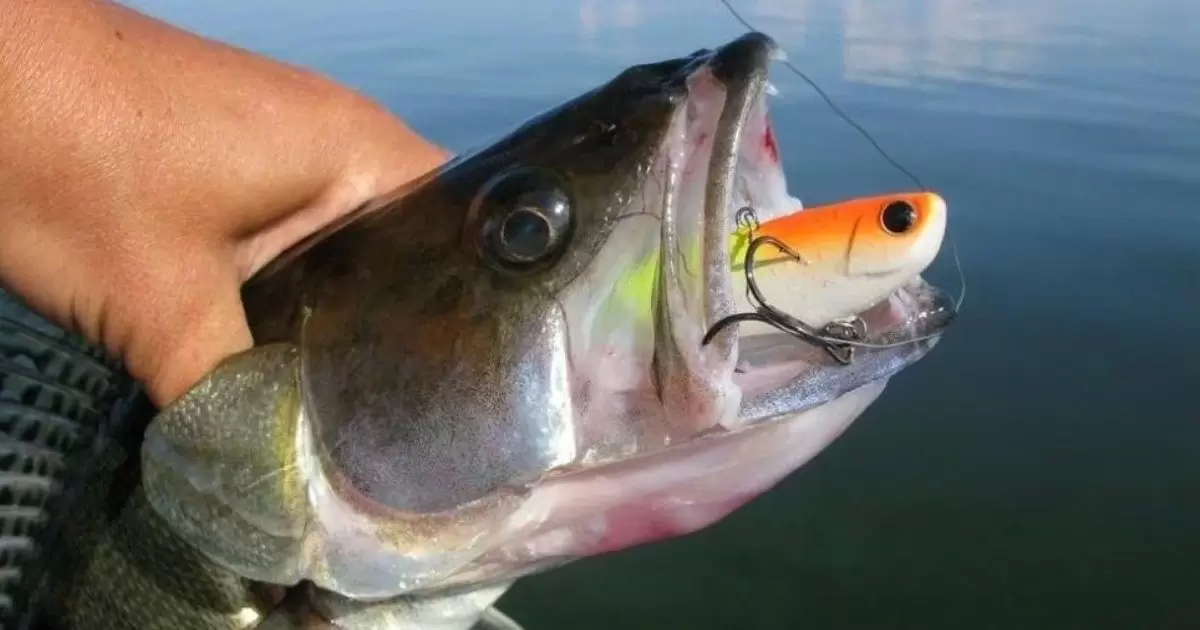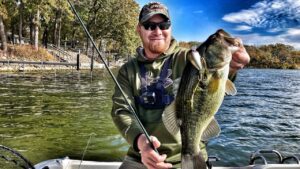Bass fishing is one of the most popular freshwater sportfishing activities in North America. Both largemouth and smallmouth bass provide an excellent fight on lightweight rods. However, consistently catching these wily freshwater predators requires anglers to have an arsenal of highly effective artificial lures in their tackle boxes.
From plastic worms and jigs to spinnerbaits and topwater plugs, bass fishermen employ a wide variety of lures that mimic the forage bass eat in nature. The rise of competitive bass tournaments has also spurred innovation in lure design in recent decades. New materials, shapes, and hardware allow lures to be fished with incredibly lifelike action.
Savvy bass anglers carefully choose the right lures for different water conditions, terrain, seasons, and phases of the day or night. Having the right lure dialed in is often the difference between a productive day on the water versus coming home empty-handed.
Common Types of Bass Fishing Lures

Bass anglers have a variety of artificial lures to choose from to entice strikes from their wily quarry. Some of the most popular and effective lure categories include plastic worms, spinnerbaits, crankbaits, jigs, and innovative topwater baits.
Each type is designed to trigger aggression by mimicking forage and exhibiting lifelike action and vibration when reeled. Knowing which lures to use and when provides anglers an edge in their pursuit of largemouth and smallmouth bass.
Read More: Fishing Tattoos
Plastic worms
The plastic worm is one of the most popular and versatile bass lures. It comes in various shapes, sizes, and colors to emulate different forage items. Plastic worms can be fished either weightless or with attached jig heads or underpinners. This authorizes anglers to imitate wounded baitfish or frogs at different depths. The soft, flexible design creates enticing twitches and wiggly movements to provoke savage strikes from lurking bass.
Spinnerbaits
A spinnerbait is an effective lure for enticing aggressive bass. It features a wire arm with one or more rotating blades that flash and vibrate enticingly when reeled. The spinning blades create commotion triggering predator instinct. Spinnerbaits can be retrieved slowly to allow the blades to pulse and sink below the surface or cranked quickly for a surface retrieve. Their entrancing action often triggers territorial strikes from bass lurking near cover.
Crankbaits
Crankbaits have a hard body design that wobbles side to side and darts erratically when reeled, imitating the swimming movement of small fish. The tight action stimulates predatory bass to strike. Crankbaits are also versatile, as different models are designed to run at varying depths, allowing anglers to effectively target distinct water columns. Their darting lure presentation combined with casting distance makes crankbaits a go-to bait for efficiently seeking out bass.
Jigs
Jigs are simple yet effective bass lures. They consist of a lead or tungsten weight connected directly to a hooked shank. anglers dress jigs with plastic trailers mimicking worms or lizards. The weighted jig head causes the plastic to twitch and undulate enticingly when retrieved. Jigs can be worked slowly along structures or floors, hopped, or twitched enticingly to trigger reaction strikes. Their unadorned profile also works well in dirty water.
Topwater lures
Topwater lures are among the most exciting to fish as they trigger vicious explosive strikes from bass. Popular varieties include poppers, prop baits and walking baits. Prop baits imitate injured baitfish while poppers create splashing sounds. Worked across the surface, they trigger predator instinct as bass ambush their prey. On calm mornings and evenings, topwater bait can be twitched or walked to invoke the surface-exploding strikes of thrill-seeking anglers.
Color selection
Choosing the right lure color can make a difference between catching bass or going home empty-handed. In stained waters, darker hues that silhouette attract strikes. In clear lakes, natural shades emulate local forage and go undercovered. Bright colors pop during sunny spells. Some bass even target certain hues. Careful observation of watercolor and clarity helps anglers pick the most enticing shades to trick wary bass into biting.
Choosing lure based on
Savvy anglers consider multiple factors when selecting which lures to throw. Water clarity and depth determine whether to choose lifelike or more subtle offerings. Heavy cover warrants baits enhancing a delicate presentation. When forage is abundant, active lures mimicking distress receive attention. During spawns, noisy topwaters trigger protective strikes. Observing the environment and bass behavior provides clues on which baits make the most convincing match, optimizing chances of outwitting bass.
Factors for Choosing Lures

- Water clarity – Choose more lifelike colors and action in clear water and darker/subdued lures in stained water.
- Water depth – Choose lures rated to run at different depths like shallow, medium, or deep diving crankbaits and jigs.
- Light levels – Use darker lures in low-light and brighter colors when sunny. Topwaters excel in low-light mornings and evenings.
- Temperature – Colder weather calls for the presentation of jigs and plastic worms near the bottom. Warmer water means faster retrieves with crankbaits and spinnerbaits.
- Cover type – Around grass, use weedless baits retrieved gently. Near wood or docks, try crankbaits. Poppers attract fish near lily pads or open water.
- Baitfish abundance – Imitate distressed shad with jerking crankbaits if the bait is plentiful, or injured frogs with plastic worms if the bait is scarce.
- Season – Topwaters trigger spawning bass. Worms and jigs catch fish near spawning beds and early season. Crankbaits excel in summer.
Techniques for Using Different Lures
- Rig plastic worms weightless or weighted and slowly crawl or hop them near cover.
- Start spinnerbaits in cover and slowly retrieve with pauses to pulse the blades.
- Vary the speed of crankbait retrieves for different actions and cover types.
- Twitch or slowly work jigs along bottom structures and hop them over rocks and logs.
- Twitch or walk topwater plugs across calm surfaces and pop or twitch poppers.
- Slowly reel or burn and pause big swimbaits to mimic injured baitfish.
- Burn lipless crankbaits fast along grass lines and twitch them near wood.
- Pause jerk baits after fast jerking retrieves to trigger ambushes near vegetation.
What is the trick to bass fishing?
The trick to being a successful bass fisherman is utilizing a variety of techniques and having a wide range of lures at your disposal. It’s not just about what lure you use, but how you present it. An effective angler understands bass behavior and can put their lure right in the strike zone. They know when bass will be more actively feeding and can adjust their retrieve speed and cadence accordingly.
Paying close attention to factors like water clarity, time of day, cover, and weather helps anglers determine not only which lure to throw, but how aggressive or subtle the presentation should be. Being adaptable is key, as bass don’t always cooperate.
The most consistent anglers are masters of reading the water and individual bass movements to tempt them into biting. With experience and constant learning, they develop the instincts to outsmart even the wariest of largemouth.
FAQ’s
What type of lure creates popping noises on the surface?
Poppers
What lure type has a diving lip that causes it to wobble side to side?
Crankbaits
Which soft plastic lure is often rigged weightless to mimic injured bait?
Plastic worms
Conclusion
In conclusion, having an assortment of bass fishing lures that cover all techniques is key to being an angler who consistently puts fish in the boat. Being versatile means being able to target bass under any conditions – from deep diving crankbaits to weightless plastics. While hard baits excel at covering water quickly, soft plastics allow for delicate presentations. Topwater lures provide an exciting visual strike, but jigs can be effective in any season.
New types of lures are always being developed, but time-tested classics like spinnerbaits are perennial favorites for a reason. Most importantly, understanding how to deploy these lures – whether with a steady retrieve or experimental twitches – is what puts anglers on fish. With experience comes an instinct for reading bass. And for any fisherman passionate about their craft, the joy is in the lifelong learning of species as cunning as the largemouth.
With three years of dedicated expertise in the niche of fish, my domain knowledge encompasses breeding, habitat maintenance, health management, and sustainable aquaculture practices, ensuring optimal outcomes in the aquatic realm.











